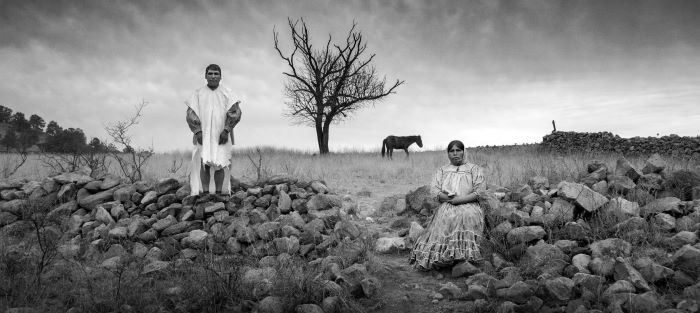Gods of Mexico is most reminiscent of an art gallery exhibit conjoined not by a single narrative, but, rather, geographic and visual motifs. Director Helmut Dosantos’s non-fiction feature debut consists of staged tableaus bookended with more active depictions of Mexican workers in mines and salt flats. As a literal “portrait of a nation through its land and peoples”, telegraphed by an onscreen subtitle offered at the beginning of the film, it is an aesthetic success, bestowing a sublimity upon its two main subjects. As a humanizing and/or contextualizing piece of nonfiction cinema, however, the film seems to think that merely presenting images of modern-day indigenous peoples is enough to make a point. The collected images are visually arresting, but the human subjects are rendered mute and, at times, reduced to little more than a photographer’s patient models.
Perhaps the film’s most lasting impression is the inextricability of the indigenous people’s relation to the land. To any audience at DCTV’s Firehouse Cinema in New York, the labor depicted in the first section will appear backbreaking, if synchronous and quietly poetic: boulders are fragmented using handsaws; salt marshes swept in rhythmic tandem while a water snake rests its head on a hot stone; entire ovens dug, lined, fueled, and deconstructed in order to make the cement needed to expand the salt field.
Split into chapters labeled with geographic regions and the names of Aztec gods, the ensuing section encompasses the “gallery art” portion. The native peoples of Mexico are filmed statically, posing for the camera with little to no movement. On their faces and in their postures can be read the generational evolution of life tied closely to their native land. The coastal wind ripples the shirt of a fisherman hanging the day’s catch over his shoulder. A man sitting at the base of an agave plant communicates with an unseen companion call-and-response style through whistles carried on the wind. Three women balance woven baskets atop their heads in a dune in a sandy desert. Riverbeds and tumbleweeds suddenly begin to resemble wrinkles and hair. This section concludes with a slow zoom into a crater that, through its slow distending, renders the textured floor nearly unrecognizable from a photo of the cloudy cosmos.
In the final section, we follow the exploits of a group of miners as they descend into the earth through a network of subterranean tunnels, a geographic inverse to the above-ground salt flat work from the film’s opening. Here again, the filmmakers pay close attention to laborers detonating controlled explosives, forging picks, transporting shattered stone, and playing dice under the illumination of their headlamps. These are the human hands that can move mountains and cultivate the earth for her natural resources.
The lack of dialogue (with the scant chatter present going un-subtitled) emphasizes a kind of stoic reverence for the people that does not actually humanize the communities it represents. The people are presented for us to marvel at, but not actually given the opportunity to speak for themselves. The film is an artistic triumph, if not a humanistic portrayal with dignity as intended.

Comments